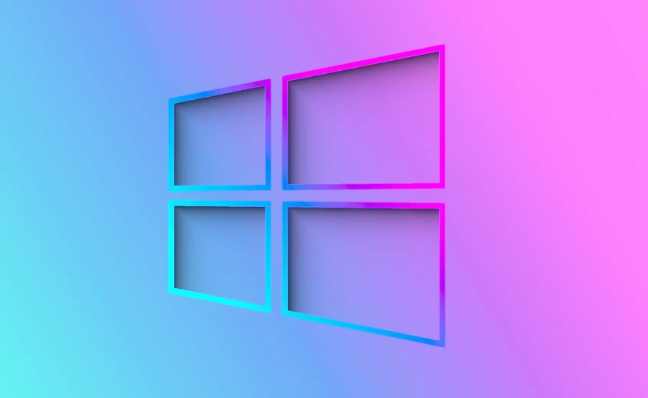 Computer Tutorials
Computer Tutorials
 Computer Knowledge
Computer Knowledge
 Understanding Screen Resolution, Refresh Rate, and Response Time
Understanding Screen Resolution, Refresh Rate, and Response Time
Understanding Screen Resolution, Refresh Rate, and Response Time
Jul 23, 2025 am 03:18 AMThe screen resolution determines the clarity. 1080p is suitable for daily use below 24 inches. 1440p or 4K is recommended for better experience over 27 inches. 2. The refresh rate affects the smoothness of the picture. 60Hz is suitable for office work, and 144Hz and above is suitable for gaming and dynamic operations. 3. The response time is related to the sharpness of the dynamic picture. 1ms is suitable for competitive games, 4-5ms meets daily and ordinary game needs, and avoids more than 8ms to prevent striking.

When setting up a monitor—whether for work, gaming, or content creation—three key specs often come up: screen resolution , refresh rate , and response time . These terms might sound technical, but they directly affect how clear, smooth, and responsive your display feels. Here's what each means and why it matters:

Screen Resolution: How Sharp the Image Looks
Resolution refers to the number of pixels displayed on your screen, usually written as width × height (eg, 1920x1080).
- Higher resolution = more detail . Think 1080p (Full HD), 1440p (QHD), or 4K (UHD).
- More pixels mean sharper text, crisper images, and better multitasking (you can fit more on-screen).
- But: higher resolution needs more GPU power—especially in games—and may make UI elements feel small unless scaled.
Tip : For general use, 1080p is fine on 24" screens. For 27" and up, 1440p or 4K gives a noticeably better experience.

Refresh Rate: How Smooth Motion Feels
Measured in Hertz (Hz) , this is how many times per second the screen updates.
- 60Hz = 60 frames per second (standard for most monitors).
- 144Hz or higher = smooth scrolling, better for fast-paced games or animations.
- You'll feel the difference most in gaming or when moving windows around—it just feels more fluid.
Note : Your GPU must be able to push that many frames to benefit. A 144Hz monitor won't help if your game only runs at 60 FPS.

Response Time: How Fast Pixels Change
Measured in millionseconds (ms) , this is how quickly a pixel changes color.
- Lower is better:
- 1ms = great for competitive gaming (less motion blur).
- 4–5ms = fine for general use or casual gaming.
- Too slow (eg, 8ms ) can cause "ghosting"—where fast motion leaves a trail.
Watch out : Some brands list "gray-to-gray" (GtG) response time—it's more realistic than "black-to-white."
Putting it all together :
- For gaming : Aim for 1440p or 1080p, 144Hz, and 1ms response time.
- For productivity : 1440p or 4K at 60–75Hz with 4–5ms is plenty.
- For casual use : 1080p, 60Hz, 5ms is totally fine and budget-friendly.
You don't need the highest of everything—match the specs to your use case. That's how you get the best value and experience.
Basically, resolution = clarity, refresh rate = smoothness, response time = sharpness in motion. Get the balance right, and your screen just works .
The above is the detailed content of Understanding Screen Resolution, Refresh Rate, and Response Time. For more information, please follow other related articles on the PHP Chinese website!

Hot AI Tools

Undress AI Tool
Undress images for free

Undresser.AI Undress
AI-powered app for creating realistic nude photos

AI Clothes Remover
Online AI tool for removing clothes from photos.

Clothoff.io
AI clothes remover

Video Face Swap
Swap faces in any video effortlessly with our completely free AI face swap tool!

Hot Article

Hot Tools

Notepad++7.3.1
Easy-to-use and free code editor

SublimeText3 Chinese version
Chinese version, very easy to use

Zend Studio 13.0.1
Powerful PHP integrated development environment

Dreamweaver CS6
Visual web development tools

SublimeText3 Mac version
God-level code editing software (SublimeText3)

Hot Topics
 VSCode settings.json location
Aug 01, 2025 am 06:12 AM
VSCode settings.json location
Aug 01, 2025 am 06:12 AM
The settings.json file is located in the user-level or workspace-level path and is used to customize VSCode settings. 1. User-level path: Windows is C:\Users\\AppData\Roaming\Code\User\settings.json, macOS is /Users//Library/ApplicationSupport/Code/User/settings.json, Linux is /home//.config/Code/User/settings.json; 2. Workspace-level path: .vscode/settings in the project root directory
 How to handle transactions in Java with JDBC?
Aug 02, 2025 pm 12:29 PM
How to handle transactions in Java with JDBC?
Aug 02, 2025 pm 12:29 PM
To correctly handle JDBC transactions, you must first turn off the automatic commit mode, then perform multiple operations, and finally commit or rollback according to the results; 1. Call conn.setAutoCommit(false) to start the transaction; 2. Execute multiple SQL operations, such as INSERT and UPDATE; 3. Call conn.commit() if all operations are successful, and call conn.rollback() if an exception occurs to ensure data consistency; at the same time, try-with-resources should be used to manage resources, properly handle exceptions and close connections to avoid connection leakage; in addition, it is recommended to use connection pools and set save points to achieve partial rollback, and keep transactions as short as possible to improve performance.
 Full-Stack Web Development with Java, Spring Boot, and React
Jul 31, 2025 am 03:33 AM
Full-Stack Web Development with Java, Spring Boot, and React
Jul 31, 2025 am 03:33 AM
Selecting the Java SpringBoot React technology stack can build stable and efficient full-stack web applications, suitable for small and medium-sized to large enterprise-level systems. 2. The backend uses SpringBoot to quickly build RESTfulAPI. The core components include SpringWeb, SpringDataJPA, SpringSecurity, Lombok and Swagger. The front-end separation is achieved through @RestController returning JSON data. 3. The front-end uses React (in conjunction with Vite or CreateReactApp) to develop a responsive interface, uses Axios to call the back-end API, and ReactRouter
 Java Performance Optimization and Profiling Techniques
Jul 31, 2025 am 03:58 AM
Java Performance Optimization and Profiling Techniques
Jul 31, 2025 am 03:58 AM
Use performance analysis tools to locate bottlenecks, use VisualVM or JProfiler in the development and testing stage, and give priority to Async-Profiler in the production environment; 2. Reduce object creation, reuse objects, use StringBuilder to replace string splicing, and select appropriate GC strategies; 3. Optimize collection usage, select and preset initial capacity according to the scene; 4. Optimize concurrency, use concurrent collections, reduce lock granularity, and set thread pool reasonably; 5. Tune JVM parameters, set reasonable heap size and low-latency garbage collector and enable GC logs; 6. Avoid reflection at the code level, replace wrapper classes with basic types, delay initialization, and use final and static; 7. Continuous performance testing and monitoring, combined with JMH
 python pytest fixture example
Jul 31, 2025 am 09:35 AM
python pytest fixture example
Jul 31, 2025 am 09:35 AM
fixture is a function used to provide preset environment or data for tests. 1. Use the @pytest.fixture decorator to define fixture; 2. Inject fixture in parameter form in the test function; 3. Execute setup before yield, and then teardown; 4. Control scope through scope parameters, such as function, module, etc.; 5. Place the shared fixture in conftest.py to achieve cross-file sharing, thereby improving the maintainability and reusability of tests.
 python itertools combinations example
Jul 31, 2025 am 09:53 AM
python itertools combinations example
Jul 31, 2025 am 09:53 AM
itertools.combinations is used to generate all non-repetitive combinations (order irrelevant) that selects a specified number of elements from the iterable object. Its usage includes: 1. Select 2 element combinations from the list, such as ('A','B'), ('A','C'), etc., to avoid repeated order; 2. Take 3 character combinations of strings, such as "abc" and "abd", which are suitable for subsequence generation; 3. Find the combinations where the sum of two numbers is equal to the target value, such as 1 5=6, simplify the double loop logic; the difference between combinations and arrangement lies in whether the order is important, combinations regard AB and BA as the same, while permutations are regarded as different;
 Mastering Dependency Injection in Java with Spring and Guice
Aug 01, 2025 am 05:53 AM
Mastering Dependency Injection in Java with Spring and Guice
Aug 01, 2025 am 05:53 AM
DependencyInjection(DI)isadesignpatternwhereobjectsreceivedependenciesexternally,promotingloosecouplingandeasiertestingthroughconstructor,setter,orfieldinjection.2.SpringFrameworkusesannotationslike@Component,@Service,and@AutowiredwithJava-basedconfi
 A Guide to Java Flight Recorder (JFR) and Mission Control
Jul 31, 2025 am 04:42 AM
A Guide to Java Flight Recorder (JFR) and Mission Control
Jul 31, 2025 am 04:42 AM
JavaFlightRecorder(JFR)andJavaMissionControl(JMC)providedeep,low-overheadinsightsintoJavaapplicationperformance.1.JFRcollectsruntimedatalikeGCbehavior,threadactivity,CPUusage,andcustomeventswithlessthan2%overhead,writingittoa.jfrfile.2.EnableJFRatsta





